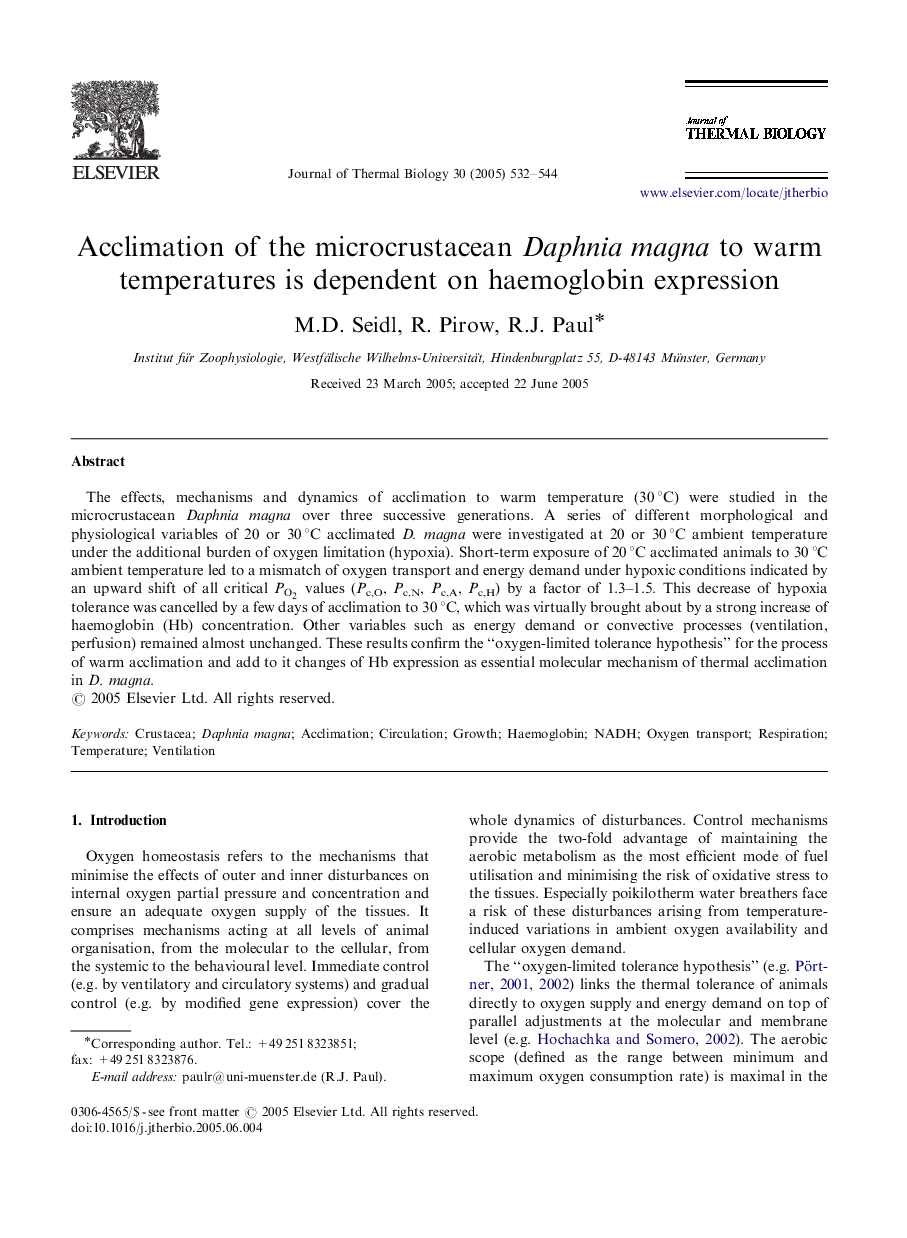| Article ID | Journal | Published Year | Pages | File Type |
|---|---|---|---|---|
| 9148784 | Journal of Thermal Biology | 2005 | 13 Pages |
Abstract
The effects, mechanisms and dynamics of acclimation to warm temperature (30 °C) were studied in the microcrustacean Daphnia magna over three successive generations. A series of different morphological and physiological variables of 20 or 30 °C acclimated D. magna were investigated at 20 or 30 °C ambient temperature under the additional burden of oxygen limitation (hypoxia). Short-term exposure of 20 °C acclimated animals to 30 °C ambient temperature led to a mismatch of oxygen transport and energy demand under hypoxic conditions indicated by an upward shift of all critical PO2 values (Pc,O, Pc,N, Pc,A, Pc,H) by a factor of 1.3-1.5. This decrease of hypoxia tolerance was cancelled by a few days of acclimation to 30 °C, which was virtually brought about by a strong increase of haemoglobin (Hb) concentration. Other variables such as energy demand or convective processes (ventilation, perfusion) remained almost unchanged. These results confirm the “oxygen-limited tolerance hypothesis” for the process of warm acclimation and add to it changes of Hb expression as essential molecular mechanism of thermal acclimation in D. magna.
Keywords
Related Topics
Life Sciences
Agricultural and Biological Sciences
Agricultural and Biological Sciences (General)
Authors
M.D. Seidl, R. Pirow, R.J. Paul,
